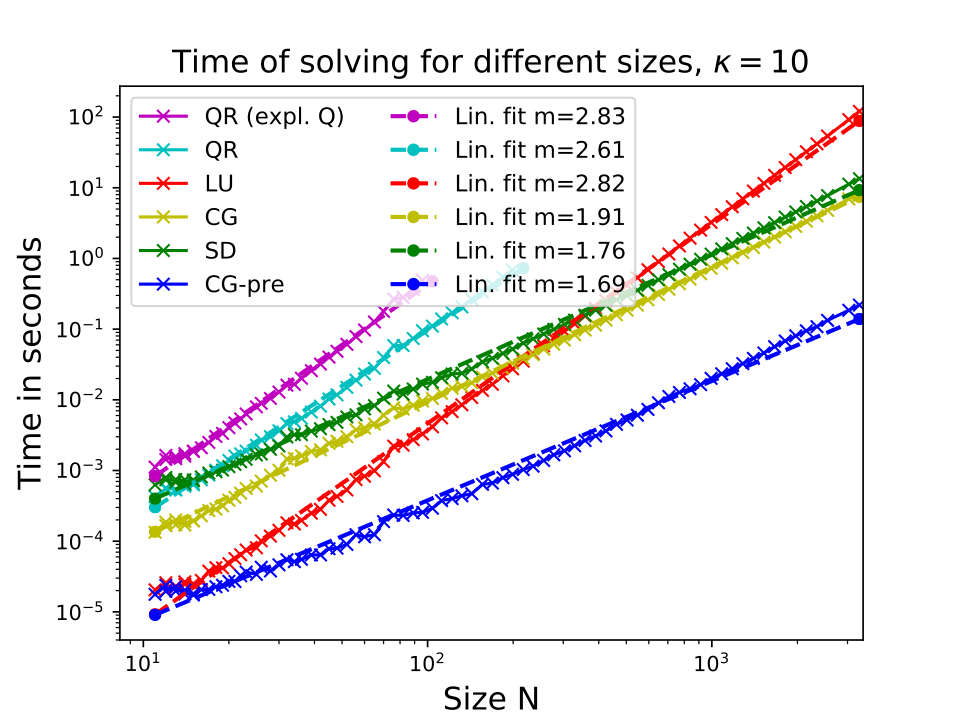(For code description see bottom)
This project's purpose was to analyze the different scaling patterns of commonly used Linear solvers. The algorithms implemented here are: LU, QR (implicit and explicit), SD, CG, CG with Jacobi pre-conditioning, Sucessive-overrelaxation, Jacobi, Gauss-Seidel.
Linear systems have the shape Ax = b with a known matrix A and known vector b. Essentially all we're trying to do is x=A\b, in Matlab notation. Note also that these solvers can be used for finding an x that minimizes || Ax - b ||. This is done by solving the symmetric system A'Ax = A'b (note however that the condition number will be squared).
LU, QR, SD, (if you take the squared system: CG)
LU, QR, SD, CG.
LU, QR, SD, CG, Sucessive-overrelaxation (includes Jacobi and Gauss-Seidel)
Steps for generating random matrices of size N with desired condition numbers κ:
- We generate random matrix Q of size
NxN - We orthonormalize the columns via modified Gram-Schmidt
- We let D = diag(linspace(1,...,
κ)) A = QDor if we want a symmetric system:A = QDQ'- Generate random vector
xand letb = Ax.
Steps for generating SRDD matrices with size N and approximately κ = 2N
- Generate random matrix A of size
NxN - Set diagonal entries of A to linspace(N,...,2N)
- Generate random vector
xand letb = Ax. By Gershogorin discs the matrix has approximately the eigenvalues (N,...,2N) and thusκ = 2.
In the above figure we use the normal system for the CG solvers.
- symmetric matrices with low condition number are easiest to solve
- iterative methods can outperform decomposition methods even for modest problem sizes
- the algorithms scale very differently, though consistently faster then their theoretical prediction
- pre-conditioning improves convergences of the CG algorithm
- which algorithm is the fastest depends crucially on the problem size and the condition number, though CG-pre and LU among the fastest implemented here
- Definitely easier to implement in Matlab, Python.. there are definitely still some bugs in my code
- Matrices were too easy for my solvers in some cases by construction (CG with pre-conditioning converges in 1-step for
A = QDQ') - Writing everything in C++ was instructive but one should really use proper templates like Eigen
vary_N.cpp: implements the above procedure for symmetric A system with 10 iterations at every size. Sizes grow exponentially.vary_kappa.cpp: same as vary_N except that now we varyκat every iteration and keepN = 100SRDD.cpp: Generates SRDD matrix as above and solves it, also 10 iterations at every size that grows exponentially.Matrix.cpp: Includes the matrix class and all methods and the solversVector.cpp: A vector class, as from introductory C++ course of Joe Pit-Francis



